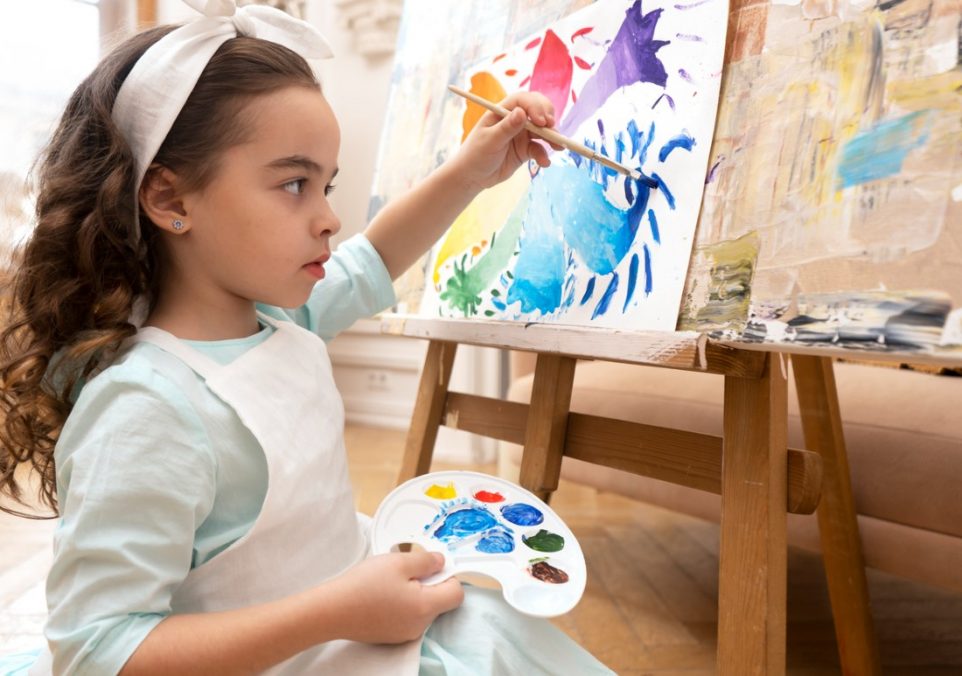Learn How to Paint With These Fun Exercises for Beginners

There’s nothing quite as satisfying as creating something beautiful with a brush and some paint. Whether it’s a landscape, a portrait, or something more abstract, painting can be an incredibly enjoyable and relaxing activity, especially when you master the basics. If you’re just starting out and wondering how to learn to paint, you may be surprised to learn that it can start with some unexpected activities.
In this post, we’ll discuss multiple activities that you could try to get a better understanding of how to paint. From creative drawing exercises to simple color theory, these activities are designed to give you a better understanding of the fundamentals of painting and to help you develop your skills. So, let’s get started and take a look at the activities that could help you learn how to paint.
Develop an Eye for Color
Before you get started with painting, it is important to understand basic color principles. Developing an eye for color will help to create a strong foundation for all of your future projects. Take note of different shades and color combinations, and keep a color notebook or diary to record the ones you find most interesting or appealing.
Understand the Color Wheel
The color wheel is a great resource for understanding and applying color relationships in your work. When exploring the color wheel, take note of how primary colors (red, blue, and yellow), secondary colors (orange, green, and violet), and tertiary colors (colors made by mixing primary and secondary colors together) work together. Having an understanding of how colors relate to each other is key when selecting colors for your paintings.
Master Shade, Tint, and Tone
It is also helpful to understand the concepts of shade, tint, and tone when choosing colors for a painting. While shade is a hue darkened by adding black or gray pigment, tint is a hue lightened by adding white pigment. Tone is created by adding gray pigment to mix up the lightness or darkness of a hue. Experimenting with different combinations of shade, tint, and tone can lead to interesting results in your painting! Having a well-rounded art set can make this exploration even more enjoyable.
Play with Color Combinations
Another way to develop your eye for color is to explore various color combinations and see which ones look best together in your paintings. You can use the color wheel as a reference when choosing colors or experiment with analog colors (two colors that are side-by-side on the color wheel), complementary colors (two completely opposite colors), split complements (three colors adjacent on the color wheel), triadic colors (three equally spaced hues on the color wheel) or monochrome color schemes (all variations of one particular hue).
Utilize Reference Materials
When looking for reference materials, think outside the box! Try looking everywhere from websites and books to photographs or objects from around your house that can provide inspiring imagery for your painting. Even simple things like nature walks or observing people in public can be great sources of reference material.
With your reference materials gathered together, start collecting samples. Organize images into boards or collections so that they can easily be referenced during painting sessions. Once collected, you can compare elements such as line weight, tone, texture, and color temperature to get inspired. Don’t forget to take notes while looking at samples.
Printing out images or bringing objects into your studio will also help deepen your understanding of composition and form as you work through different concepts in painting. Over time, challenge yourself by introducing more difficult references, such as photos taken from challenging angles or objects that demonstrate perspective distortion, texture, or value changes due to lighting conditions.
If you are feeling intimidated about where to start, several companies sell pre-drawn images, and you can practice painting, or you can set up a blank canvas beside an image and attempt to replicate it. Using watercolor pencils is an easier alternative to traditional watercolor paints, making them a good starting point for beginners. Another option that helps build brush skills while training your hands to remain steady during painting is a paint-by-numbers kit.
Trusted Insights from Artists
At Art Life Today, our passion for arts and crafts is at the heart of everything we do. We understand that the right tools and materials can make all the difference in your creative projects, so we take our responsibility as reviewers seriously. Our goal is to help you discover the best products that will inspire your creativity and bring your artistic visions to life.